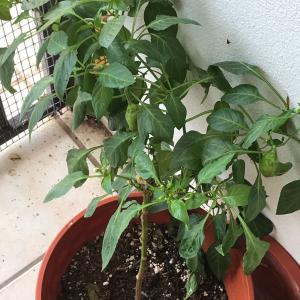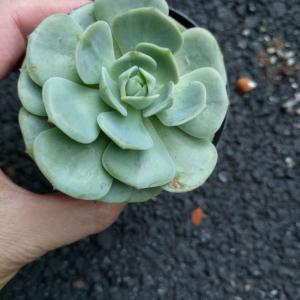XVII-Blackheart
2017年11月12日

Echeveria Elegans 'Mexican snowball'
After some long searching, which is really difficult! I finally found it's name. It's easy to confuse with a 'Green pearl'. I really love it! ❤️✨

After some long searching, which is really difficult! I finally found it's name. It's easy to confuse with a 'Green pearl'. I really love it! ❤️✨

1
1
求助
XVII-Blackheart
2017年11月12日

It's definitely not a Black night. And it's just a dark green colour, with lighter green in the middle. It also has different leaf tips than it. I'm sure it's an Echeveria Elegans. But I'd really love to know it's official name. Thanks!

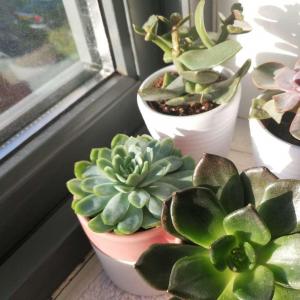


0
0
shirly mei:I am pretty sure this is not a Echeveria elegans but a Echeveria black prince. the more light it has, the more it will become darker.
成长记
Flora Wong
2017年10月25日

it seemed so dead but it's growing fresh leaves! keeping it away from direct sun this time. hopefully it stays green.

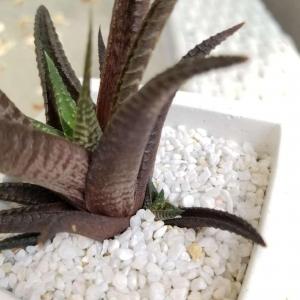


0
0
文章
Dummer. ゛☀
2017年10月02日

An Aloe vera plant can add a lovely touch of green to any office or home. But did you know that your favorite potted plant could be used for so much more than household decor?

It has been used for medicinal purposes for centuries. Native to North Africa, Southern Europe, and the Canary Islands, today Aloe vera is grown in tropical climates worldwide. From relieving heartburn to slowing the spread of cancer, researchers are only first beginning to unlock all of the powerful uses of this universal plant and its many amazing byproducts.
1. Your houseplant could fight your heartburn. Gastroesophageal reflux disease (GERD) is a digestive disorder that often results in symptoms including heartburn. A recent review explains that consuming 1 to 3 onces of Aloe vera gel at mealtimes could reduce the severity of GERD and other digestion-related problems. The plant’s low toxicity makes it a safe and gentle remedy.
2. A little Aloe vera gel a day could keep bacteria on fruits and vegetables away. In a recent study, an Aloe vera gel coating on tomato plants was able to block, not all, but many types of harmful bacteria. Similar results were found in a different study with apples. This means that Aloe vera gel could help produce stay fresh for longer without the need for potentially dangerous chemicals.
3. An alternative to mouthwash. A 2014 study found Aloe vera extract to be a safe and effective alternative to chemical-based mouthwashes. The plant’s natural ingredients, which include a healthy dose of vitamin C, can block plaque and also provide relief if you have bleeding or swelling gums.
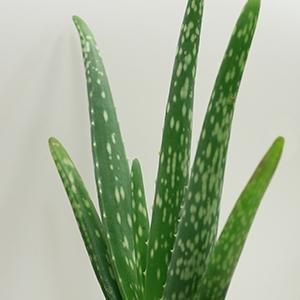
4. The new blood sugar regulator is greener than ever. Might Aloe vera be able to help people with diabetes regulate their blood sugar levels? One study conducted in Thailand found that two tablespoons of Aloe vera juice per day caused blood sugar levels to fall in people with type 2 diabetes, which means it may have a future in diabetes treatment. These results were confirmed with a later study from Turkey that used pulp extract.
5. A little extra push. Recently, a team of Nigerian scientists conducted a study to determine whether local folklore about Aloe vera was true. Experimenting on rats, they found that gel made from typical Aloe vera houseplants was able to relieve constipation.
6. Brighten more than just your office space. You can use it to keep your skin clear and hydrated. According to a study, the plant is particularly special because it’s designed to live in dry, unstable climates. To survive, the leaves of Aloe vera store water. The combination of the moist leaf and special plant compounds called complex carbohydrates make it an effective face moisturizer and pain reliever.
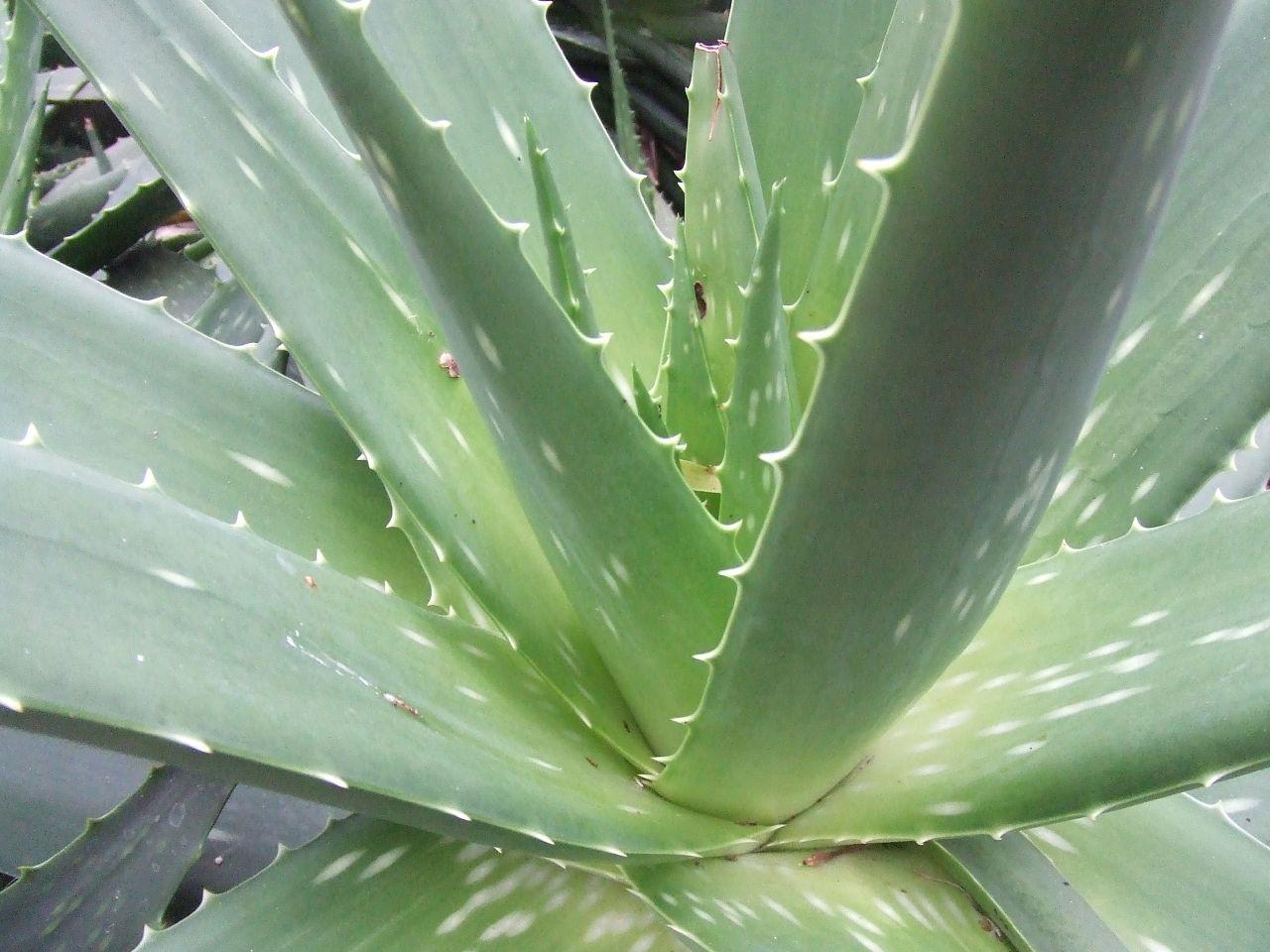
7. Stepping up in the battle against cancer. According to a new study, aloe-emodin, a compound in Aloe vera leaves, could slow down the spread of breast cancer cells. Researchers are currently investigating how it may play a role in other types of cancer, as well.
There are hundreds of ways to use the Aloe vera plant and the various gels and extracts that can be made from it. Researchers are continuing to discover new ways to put this natural superpower to use. The next time you are looking for an effective remedy or just a new houseplant, consider Aloe vera.

It has been used for medicinal purposes for centuries. Native to North Africa, Southern Europe, and the Canary Islands, today Aloe vera is grown in tropical climates worldwide. From relieving heartburn to slowing the spread of cancer, researchers are only first beginning to unlock all of the powerful uses of this universal plant and its many amazing byproducts.
1. Your houseplant could fight your heartburn. Gastroesophageal reflux disease (GERD) is a digestive disorder that often results in symptoms including heartburn. A recent review explains that consuming 1 to 3 onces of Aloe vera gel at mealtimes could reduce the severity of GERD and other digestion-related problems. The plant’s low toxicity makes it a safe and gentle remedy.
2. A little Aloe vera gel a day could keep bacteria on fruits and vegetables away. In a recent study, an Aloe vera gel coating on tomato plants was able to block, not all, but many types of harmful bacteria. Similar results were found in a different study with apples. This means that Aloe vera gel could help produce stay fresh for longer without the need for potentially dangerous chemicals.
3. An alternative to mouthwash. A 2014 study found Aloe vera extract to be a safe and effective alternative to chemical-based mouthwashes. The plant’s natural ingredients, which include a healthy dose of vitamin C, can block plaque and also provide relief if you have bleeding or swelling gums.

4. The new blood sugar regulator is greener than ever. Might Aloe vera be able to help people with diabetes regulate their blood sugar levels? One study conducted in Thailand found that two tablespoons of Aloe vera juice per day caused blood sugar levels to fall in people with type 2 diabetes, which means it may have a future in diabetes treatment. These results were confirmed with a later study from Turkey that used pulp extract.
5. A little extra push. Recently, a team of Nigerian scientists conducted a study to determine whether local folklore about Aloe vera was true. Experimenting on rats, they found that gel made from typical Aloe vera houseplants was able to relieve constipation.
6. Brighten more than just your office space. You can use it to keep your skin clear and hydrated. According to a study, the plant is particularly special because it’s designed to live in dry, unstable climates. To survive, the leaves of Aloe vera store water. The combination of the moist leaf and special plant compounds called complex carbohydrates make it an effective face moisturizer and pain reliever.

7. Stepping up in the battle against cancer. According to a new study, aloe-emodin, a compound in Aloe vera leaves, could slow down the spread of breast cancer cells. Researchers are currently investigating how it may play a role in other types of cancer, as well.
There are hundreds of ways to use the Aloe vera plant and the various gels and extracts that can be made from it. Researchers are continuing to discover new ways to put this natural superpower to use. The next time you are looking for an effective remedy or just a new houseplant, consider Aloe vera.
2
2
文章
Dummer. ゛☀
2017年10月02日

Scientific Name
Dudleya virens (Rose) Moran
Common Names
Green Liveforever, Bright Green Dudleya
Synonyms
Cotyledon virens, Echeveria virens
Scientific Classification
Family: Crassulaceae
Subfamily: Sedoideae
Tribe: Sedeae
Subtribe: Sedinae
Genus: Dudleya
Description
Dudleya virens is an uncommon species of perennial, succulent plant. The leaves are fleshy and strap-shaped, up to 8 inches (20 cm) long and up to 1.2 inches (3 cm) broad, tapering from the base (or from near middle) and are mostly green. They are arranged in a rosette. The flowers are white, with five petals up to 0.4 inch (1 cm) long. Flowers are produced in April, May, and June.
How to Grow and Care
Most of the myriad habitats Dudleyas occupy become dry in summer. Therefore, it is important to cut off water to Dudleyas in your garden during summer. Plants grown in sandy soils or containers are exceptions; they will accept infrequent summer watering as long as the soil drains well. The onset of fall or winter rains reawakens Dudleyas from drought-induced dormancy. Their shriveled leaves plump up quickly, growth resumes, and flowering occurs during the next spring or summer. Dudleyas are amazingly resilient; if a portion of a colony sloughs off a cliff face or is uprooted by a burrowing animal, it can persist for months until soil contact is reestablished.
Dudleya virens (Rose) Moran
Common Names
Green Liveforever, Bright Green Dudleya

Synonyms
Cotyledon virens, Echeveria virens
Scientific Classification
Family: Crassulaceae
Subfamily: Sedoideae
Tribe: Sedeae
Subtribe: Sedinae
Genus: Dudleya

Description
Dudleya virens is an uncommon species of perennial, succulent plant. The leaves are fleshy and strap-shaped, up to 8 inches (20 cm) long and up to 1.2 inches (3 cm) broad, tapering from the base (or from near middle) and are mostly green. They are arranged in a rosette. The flowers are white, with five petals up to 0.4 inch (1 cm) long. Flowers are produced in April, May, and June.

How to Grow and Care
Most of the myriad habitats Dudleyas occupy become dry in summer. Therefore, it is important to cut off water to Dudleyas in your garden during summer. Plants grown in sandy soils or containers are exceptions; they will accept infrequent summer watering as long as the soil drains well. The onset of fall or winter rains reawakens Dudleyas from drought-induced dormancy. Their shriveled leaves plump up quickly, growth resumes, and flowering occurs during the next spring or summer. Dudleyas are amazingly resilient; if a portion of a colony sloughs off a cliff face or is uprooted by a burrowing animal, it can persist for months until soil contact is reestablished.
0
0
文章
Dummer. ゛☀
2017年10月01日

An Aloe vera plant can add a lovely touch of green to any office or home. But did you know that your favorite potted plant could be used for so much more than household decor?
It has been used for medicinal purposes for centuries. Native to North Africa, Southern Europe, and the Canary Islands, today Aloe vera is grown in tropical climates worldwide. From relieving heartburn to slowing the spread of cancer, researchers are only first beginning to unlock all of the powerful uses of this universal plant and its many amazing byproducts.
1. Your houseplant could fight your heartburn. Gastroesophageal reflux disease (GERD) is a digestive disorder that often results in symptoms including heartburn. A recent review explains that consuming 1 to 3 onces of Aloe vera gel at mealtimes could reduce the severity of GERD and other digestion-related problems. The plant’s low toxicity makes it a safe and gentle remedy.
2. A little Aloe vera gel a day could keep bacteria on fruits and vegetables away. In a recent study, an Aloe vera gel coating on tomato plants was able to block, not all, but many types of harmful bacteria. Similar results were found in a different study with apples. This means that Aloe vera gel could help produce stay fresh for longer without the need for potentially dangerous chemicals.
3. An alternative to mouthwash. A 2014 study found Aloe vera extract to be a safe and effective alternative to chemical-based mouthwashes. The plant’s natural ingredients, which include a healthy dose of vitamin C, can block plaque and also provide relief if you have bleeding or swelling gums.
4. The new blood sugar regulator is greener than ever. Might Aloe vera be able to help people with diabetes regulate their blood sugar levels? One study conducted in Thailand found that two tablespoons of Aloe vera juice per day caused blood sugar levels to fall in people with type 2 diabetes, which means it may have a future in diabetes treatment. These results were confirmed with a later study from Turkey that used pulp extract.
5. A little extra push. Recently, a team of Nigerian scientists conducted a study to determine whether local folklore about Aloe vera was true. Experimenting on rats, they found that gel made from typical Aloe vera houseplants was able to relieve constipation.
6. Brighten more than just your office space. You can use it to keep your skin clear and hydrated. According to a study, the plant is particularly special because it’s designed to live in dry, unstable climates. To survive, the leaves of Aloe vera store water. The combination of the moist leaf and special plant compounds called complex carbohydrates make it an effective face moisturizer and pain reliever.
7. Stepping up in the battle against cancer. According to a new study, aloe-emodin, a compound in Aloe vera leaves, could slow down the spread of breast cancer cells. Researchers are currently investigating how it may play a role in other types of cancer, as well.
There are hundreds of ways to use the Aloe vera plant and the various gels and extracts that can be made from it. Researchers are continuing to discover new ways to put this natural superpower to use. The next time you are looking for an effective remedy or just a new houseplant, consider Aloe vera.

It has been used for medicinal purposes for centuries. Native to North Africa, Southern Europe, and the Canary Islands, today Aloe vera is grown in tropical climates worldwide. From relieving heartburn to slowing the spread of cancer, researchers are only first beginning to unlock all of the powerful uses of this universal plant and its many amazing byproducts.
1. Your houseplant could fight your heartburn. Gastroesophageal reflux disease (GERD) is a digestive disorder that often results in symptoms including heartburn. A recent review explains that consuming 1 to 3 onces of Aloe vera gel at mealtimes could reduce the severity of GERD and other digestion-related problems. The plant’s low toxicity makes it a safe and gentle remedy.

2. A little Aloe vera gel a day could keep bacteria on fruits and vegetables away. In a recent study, an Aloe vera gel coating on tomato plants was able to block, not all, but many types of harmful bacteria. Similar results were found in a different study with apples. This means that Aloe vera gel could help produce stay fresh for longer without the need for potentially dangerous chemicals.
3. An alternative to mouthwash. A 2014 study found Aloe vera extract to be a safe and effective alternative to chemical-based mouthwashes. The plant’s natural ingredients, which include a healthy dose of vitamin C, can block plaque and also provide relief if you have bleeding or swelling gums.

4. The new blood sugar regulator is greener than ever. Might Aloe vera be able to help people with diabetes regulate their blood sugar levels? One study conducted in Thailand found that two tablespoons of Aloe vera juice per day caused blood sugar levels to fall in people with type 2 diabetes, which means it may have a future in diabetes treatment. These results were confirmed with a later study from Turkey that used pulp extract.
5. A little extra push. Recently, a team of Nigerian scientists conducted a study to determine whether local folklore about Aloe vera was true. Experimenting on rats, they found that gel made from typical Aloe vera houseplants was able to relieve constipation.

6. Brighten more than just your office space. You can use it to keep your skin clear and hydrated. According to a study, the plant is particularly special because it’s designed to live in dry, unstable climates. To survive, the leaves of Aloe vera store water. The combination of the moist leaf and special plant compounds called complex carbohydrates make it an effective face moisturizer and pain reliever.
7. Stepping up in the battle against cancer. According to a new study, aloe-emodin, a compound in Aloe vera leaves, could slow down the spread of breast cancer cells. Researchers are currently investigating how it may play a role in other types of cancer, as well.

There are hundreds of ways to use the Aloe vera plant and the various gels and extracts that can be made from it. Researchers are continuing to discover new ways to put this natural superpower to use. The next time you are looking for an effective remedy or just a new houseplant, consider Aloe vera.
0
0
文章
Dummer. ゛☀
2017年09月30日

Hibiscus flowers are one of the most spectacular blossoms a container gardener can grow. The blooms are large, colorful and incredibly graceful. The foliage of the Hibiscus plant is also beautiful – the dark green, glossy leaves, provide a wonderful contrast to the extravagant blooms.
Tropical Hibiscus flowers are one of the enduring symbols of the tropics. These much-beloved, large and showy flowers can be grown inside in temperate zones, but it’s not an easy task. The trick with success is twofold: managing the deadly winter, and fending off hungry insects. If you can fall into a rhythm, it’s possible to keep a hibiscus plant thriving for a decade or more, with blooms in the summer.
Growing Conditions
Light: Place outside in the summer, gradually acclimating to more light. In the winter, give as much direct light as possible.
Water: Water freely in the summer, but excellent drainage is a must. Never let the mix become soggy. In the winter, let dry almost completely before watering again.
Temperature: Even a few nights below 50ºF (10ºC) will kill a Hibiscus. Move them inside when the temperature is consistently 55ºF (13ºC). They prefer between 55ºF and 70ºF (13ºC and 21ºC).
Soil: Use a well-drained potting mix. Ensure also that the plant isn’t packed in too tight in order to keep its drainage is good. Poor drainage could rot the plant’s roots and slowly wear it down.
Fertilizer: Feed in the early summer with a slow-release fertilizer or weekly with a liquid, blooming fertilizer.
Repotting
Repot as necessary, yearly or biannually. Hibiscus will grow into trees in their native habitats, but this may be unwieldy in a home setting. There’s also some benefit to keeping the Hibiscus in a relatively smaller pot, as it will make for easier pruning and moving. Failure to repot these plants often can leave them in soil without adequate nutrients for their survival, and repotting will often spur on growth if you’re finding that your Hibiscus plants seem to have stalled out. Watch out for falling leaves or other signs of stress.
Propagation
Hibiscus can be propagated with soft-stem cuttings in late spring, when the plant begins to grow again. Use rooting hormone and shelter the cutting from direct sun until it begins to grow. Many gardeners bag their plants, which seals in heat and moisture and increases newly planted cuttings’ chances of surviving. Don’t be discouraged if you can’t propagate your Hibiscus plants right away; it’s a process that takes time, even for experienced gardeners, and upon success you’ll find your new plants all the more rewarding.
Grower’s Tips
Hibiscus should be moved outside in the summer, then back inside during the winter. Tips for a successful transition include:
Trim the plant hard before moving it inside for the winter. It will go into near dormancy until late winter.
After you trim it, but before you bring it in, treat it thoroughly for insects. Neem oil and liquid detergent work well, or use a hose to blast off insects.
Once inside, don’t overwater, but provide as much humidity as possible, including daily mistings. Don’t expose to blowing air from vents.
When the weather warms to above 50ºF (10ºC) at night, move it back outside and acclimate slowly.

Tropical Hibiscus flowers are one of the enduring symbols of the tropics. These much-beloved, large and showy flowers can be grown inside in temperate zones, but it’s not an easy task. The trick with success is twofold: managing the deadly winter, and fending off hungry insects. If you can fall into a rhythm, it’s possible to keep a hibiscus plant thriving for a decade or more, with blooms in the summer.

Growing Conditions
Light: Place outside in the summer, gradually acclimating to more light. In the winter, give as much direct light as possible.
Water: Water freely in the summer, but excellent drainage is a must. Never let the mix become soggy. In the winter, let dry almost completely before watering again.
Temperature: Even a few nights below 50ºF (10ºC) will kill a Hibiscus. Move them inside when the temperature is consistently 55ºF (13ºC). They prefer between 55ºF and 70ºF (13ºC and 21ºC).
Soil: Use a well-drained potting mix. Ensure also that the plant isn’t packed in too tight in order to keep its drainage is good. Poor drainage could rot the plant’s roots and slowly wear it down.
Fertilizer: Feed in the early summer with a slow-release fertilizer or weekly with a liquid, blooming fertilizer.

Repotting
Repot as necessary, yearly or biannually. Hibiscus will grow into trees in their native habitats, but this may be unwieldy in a home setting. There’s also some benefit to keeping the Hibiscus in a relatively smaller pot, as it will make for easier pruning and moving. Failure to repot these plants often can leave them in soil without adequate nutrients for their survival, and repotting will often spur on growth if you’re finding that your Hibiscus plants seem to have stalled out. Watch out for falling leaves or other signs of stress.

Propagation
Hibiscus can be propagated with soft-stem cuttings in late spring, when the plant begins to grow again. Use rooting hormone and shelter the cutting from direct sun until it begins to grow. Many gardeners bag their plants, which seals in heat and moisture and increases newly planted cuttings’ chances of surviving. Don’t be discouraged if you can’t propagate your Hibiscus plants right away; it’s a process that takes time, even for experienced gardeners, and upon success you’ll find your new plants all the more rewarding.

Grower’s Tips
Hibiscus should be moved outside in the summer, then back inside during the winter. Tips for a successful transition include:
Trim the plant hard before moving it inside for the winter. It will go into near dormancy until late winter.
After you trim it, but before you bring it in, treat it thoroughly for insects. Neem oil and liquid detergent work well, or use a hose to blast off insects.

Once inside, don’t overwater, but provide as much humidity as possible, including daily mistings. Don’t expose to blowing air from vents.
When the weather warms to above 50ºF (10ºC) at night, move it back outside and acclimate slowly.
0
0



